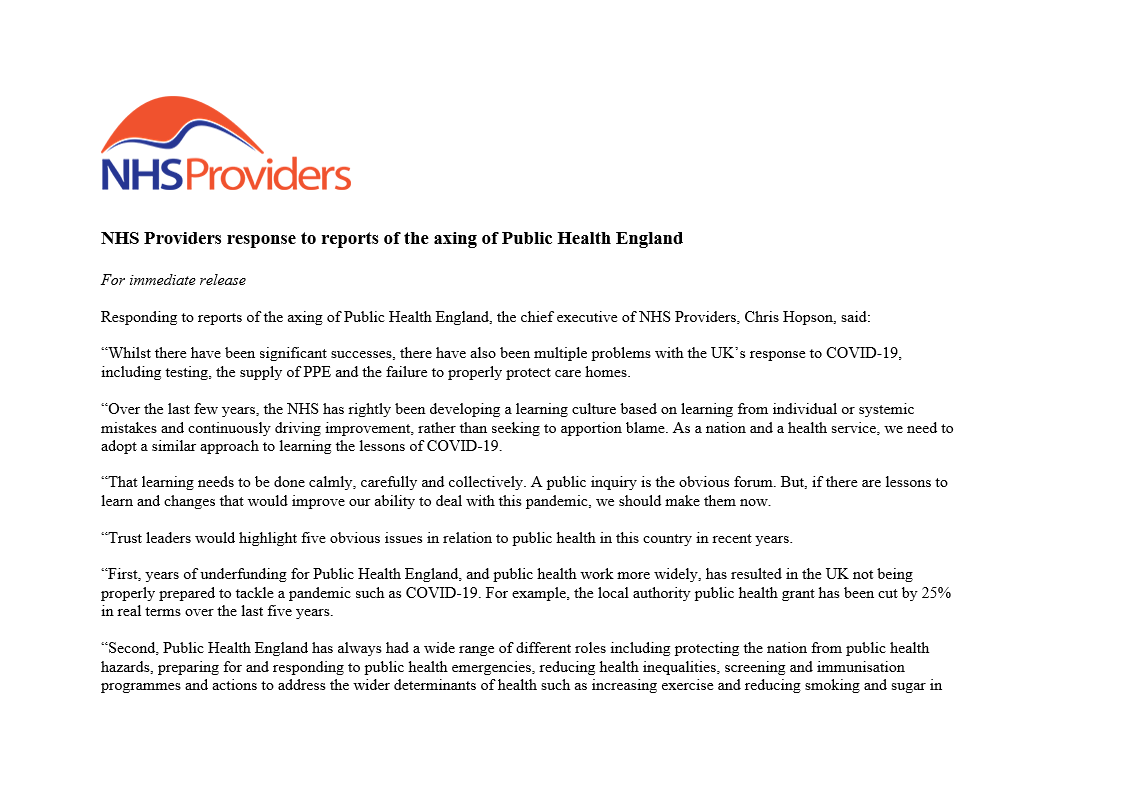
1/6 There has been an ongoing debate on the degree to which hospital discharges were responsible for the high mortality rates in care homes in the first phase of covid-19. This paper, considered by SAGE on 25 Sept, provides important new evidence: assets.publishing.service.gov.uk/government/upl…
2/6 It says that retrospective genomic analysis and serpositive studies found evidence for multiple routes into care homes. Staff, visitors, visiting professionals, hospital discharges, new admissions and persistent infections may have all contributed to introduction of covid-19.
3/6 However, and here is the key para (para 4.3 in the document): Weight of evidence is stronger in some areas than others. Evidence of staff to staff transmission has emerged in the genomic analysis (high confidence)......
4/6 .....Weak evidence on hospital discharge and modelling the impact of visitors does not suggest a dominant causal link to outbreaks from these sources.
5/6 @NHSProviders argued from mid May, as soon as the first such suggestions were made, that NHS hospital discharges were not the main cause of excess mortality in care homes (see here for example: nhsproviders.org/media/689548/s…).
6/6 We therefore feels vindicated in the argument we made / stance we took. It would be good to see greater public acknowledgement and media coverage of this important document. (Particularly from those who argued that we were wrong!)
@threadreaderapp Unroll
Sorry, that should read 24 not 25 Sept.
• • •
Missing some Tweet in this thread? You can try to
force a refresh




